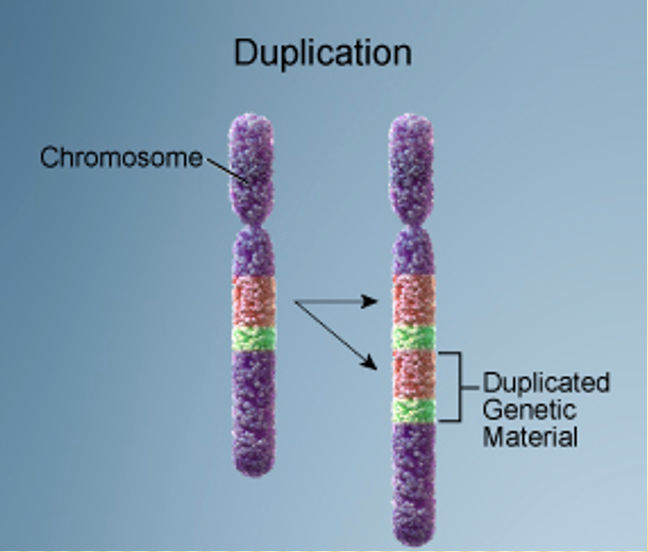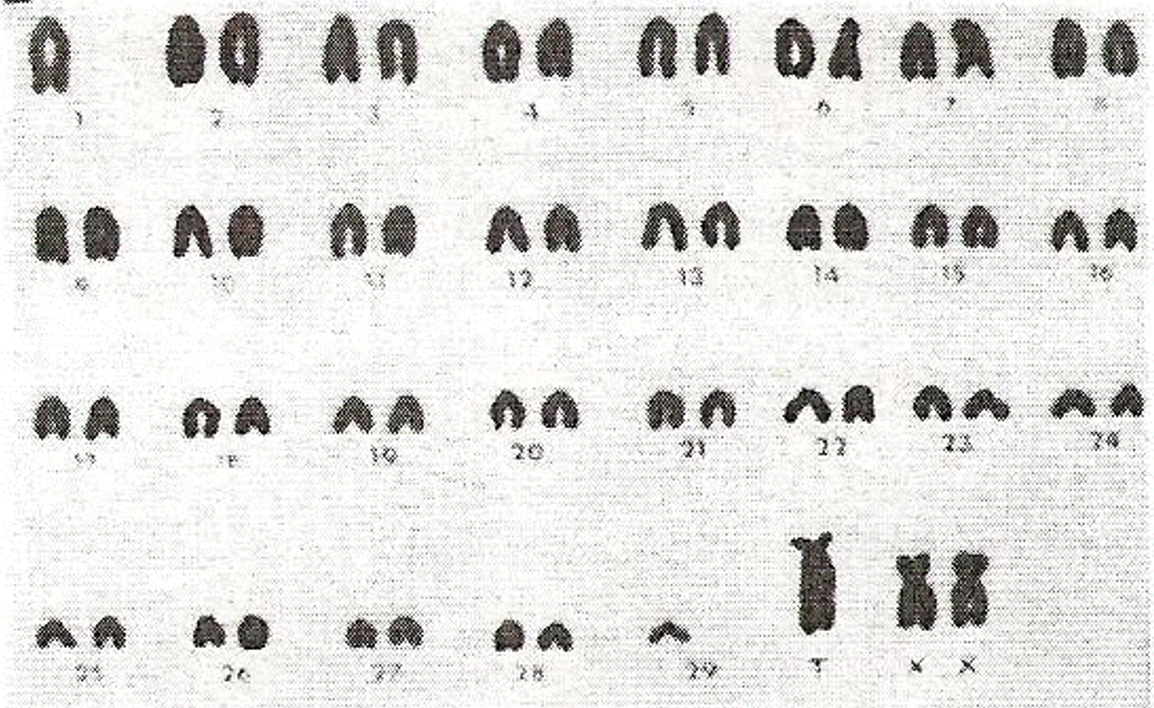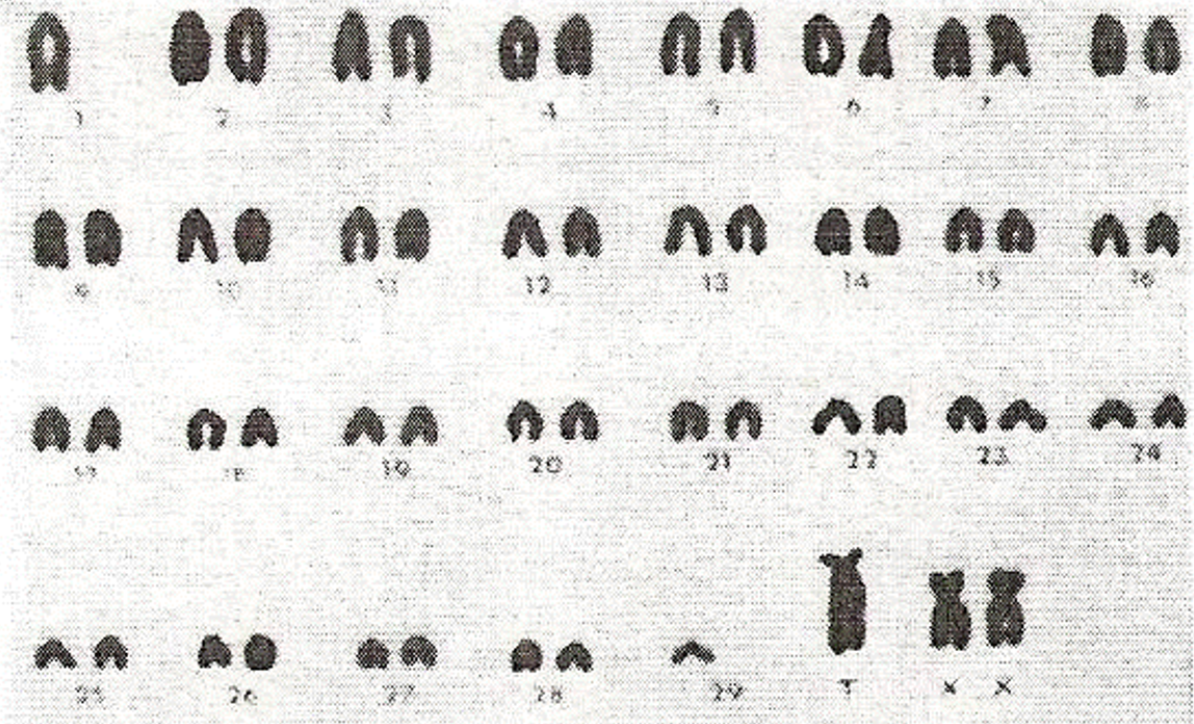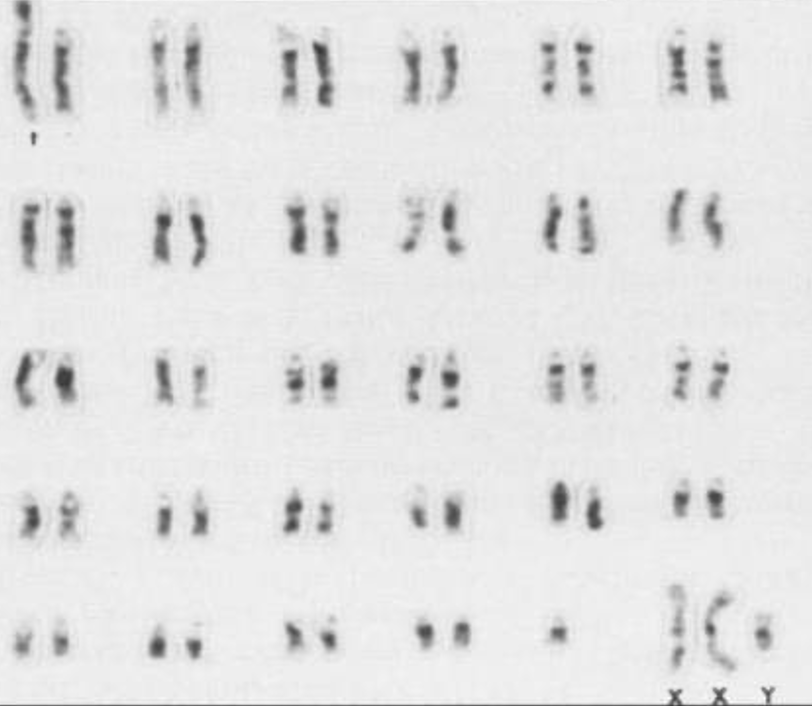Structural Changes
1/12
There's no tags or description
Looks like no tags are added yet.
Name | Mastery | Learn | Test | Matching | Spaced |
|---|
No study sessions yet.
13 Terms
What are the 2 ways mutations can alter chromosome structure and give examples
Total amount of genetic information in the chromosome can change
EX:
Deficiencies/Deletions
Duplications
Genetic material remains the same but is rearranged
EX:
Inversions
Translocations
What are the 5 types of structural alterations?
Deficiency
Duplications
Inversions #ff8e00
Insertions #8100ff
Translocation #00d6ff
Deficiency/Deletions
What
Phenotypic consequences depends on
Example
What: When a segment of a chromosome is lost/deleted
Phenotypic consequences depends on:
Size of deletion
Chromosomal material deleted
Example: Cri-du-chat syndrome in humans
Deletion in short arm of chromosome 5

Duplications
What
Phenotypic consequences depends on
More harmful or less than deletions?
What: When a segment of chromosome is copied resulting in extra genetic material
Phenotypic consequences depends on: Size of segment copied
Comparing to deletions: Less harmful

Chromosomal Inversions #ff8e00
What
What occurs to the total amount of genetic information
So is there phenotypic consequences
How can inversions alter phenotype
Types
What: When a segment is in reverse sequence along a single chromosome
What occurs to the total amount of genetic information: Stays the same
So is there phenotypic consequences: Mostly no
How can inversions alter phenotype:
Break point effect (inversion occurs in vital gene)
Position effect (alters gene expression)
Types:
Paracentric inversion: Segment of single chromosome breaks in 2 places and flips but centromere not involved
Pericentric inversion: Segment of single chromosome breaks in 2 places and flips but centromere is involved

Insertion #8100ff
What
Examples
What: When a segment of a chromosome is deleted and inserted into another chromosome
Examples: Huntington’s disease and fragile X syndrome
Translocations #00d6ff
What
What occurs to genetic material
Intrachromosomal translocation
Interchromosomal translocation
Types
Cause phenotypic consequences?
AKA
Which one causes phenotypic consequences
So they are known as
What: When a segment or a whole arm is exchanged to another chromosome
Intrachromosomal translocation: Segment breaks off and reattaches in a different location on the same chromosome
Interchromosomal translocation: Segment from one chromosome is transferred to another chromosome
Types of interchromosomal translocations:
Reciprocal: segment from 2 different chromosomes have exchanged
Cause phenotypic consequences: No because the total amount of genetic material is rearranged only
AKA: Balanced translocations (either combinations has all chromosomal material present)
Robertsonian: entire chromosome has attached to another chromosome at the centromere (whole arm or centric fusion translocation) and act as one chromosome
Cause phenotypic consequences: Can
AKA: Unbalanced translocations (either combination is missing material and has extra of other)
Translocations: Robertsonian Translocations #c500ff
How can it occur
Most common in
Example
Is it a problem?
Are there benefits from RT
How it can occur:
Breaks occur at extreme ends of short arms of 2 nonhomologous acrocentric chromsomes
Then small acentric fragments are lost
Larger fragments fuse at centromeric regions to form a single chromosome
Which is either metacentric or submetacentric
Most common in: Cattle
1:29 RT where the long arms of chromosome 1 and 29 fuse at the centromere
Forming single metacentric chromosome
Is RT a problem: Yes
Because it causes embryonic death
So carriers have decreased fertility
Benefits from RT:
Heifers (young female cows) that take longer to get pregnant (due to RT linked low fertility) continue to grow for longer
Animals that don’t reproduce early may avoid physical stress of pregnancy and calving too young
Why are majority of these defects not seen frequently in animals?
Because they are incompatible with life
But what are the issues that these defects can cause?
Reproductive problems such as inferitlity, subfertility and intersexuality

Describe the karyotype of a robertsonian translocation cow
Total chromosomes: 59
One fewer as normal cattle have 60 chromosomes
Indication of Robertsonian translocation
Chromosome 1 and 29:
Instead of 2 separate acrocentric chromosomes for 1 and 29
There’s one large metacentric chromosome labeled as T
2 X chromosomes indicate that it’s a female cow
Final karyotype: 59,XX,rob(1;29)


Describe this karyotype
60,XXY,t(1;29)

What are the results of chromosomal defects?
Early embryonic death
Minor to major congenital defects
Subfertility, infertility or sterility
Development of cancer